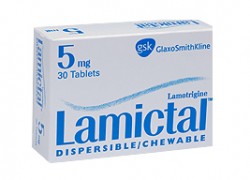Top Class Actions’s website and social media posts use affiliate links. If you make a purchase using such links, we may receive a commission, but it will not result in any additional charges to you. Please review our Affiliate Link Disclosure for more information.

What Is Lamictal?
Lamictal is an anti-epileptic medication that is used to treat seizures and to aid with bipolar disorder side effects. Children as young as 2 years old may use this medication short term as long as it is not their sole source of medication.
Although Lamictal may have helped many individuals with their epilepsy, it has also caused dangerous Lamictal SJS side effects in many users. It has also caused Toxic Epidermal Necrolysis (TEN), a more life-threatening version of SJS.
Stevens Johnson Syndrome and Toxic Epidermal Necrolysis
SJS is a rare but dangerous skin condition that is caused by the body attacking the skin. It is almost always caused by a hypersensitive reaction to a medication, like Lamictal.
Lamictal SJS symptoms begin with flu-like symptoms which are followed by a red or purplish rash. The rash then develops into severe blisters and lesions all over the skin. This can cause the epidermis (the top layer of skin) to actually separate from the second layer of skin. The skin literally burns off from the inside out. This can cause permanent scarring, secondary infection, as well as death. SJS not only affects the skin but also the mucous membranes such as the nose, eyes, mouth, and pubic area. It is an extremely painful disease and patients may become blind if the disease reaches the eyes.
SJS is diagnosed when the blisters cover less than 30 percent of the body (usually 10 percent or less). Once the condition spreads to cover over 30 percent of the body, the diagnosis changes to Toxic Epidermal Necrolysis. TEN is significantly more dangerous than SJS. While 5-15 percent of SJS patients die from the condition or secondary SJS side effects, the morality rate rises to 30-40 percent in TEN cases. Sepsis (blood infection) is one of the more common causes of death in TEN patients.
TEN can cause the patient to lose skin in large sheets. This is the reason why the mortality rate is so much higher: the risk of secondary infection and sepsis rises with the spread of the blisters and sores. TEN patients are often treated in hospital burn wards because of the high similarity to burn wounds.
Lamictal SJS Warning
Lamictal includes a prominent Black Box Warning about the risk of Stevens Johnson Syndrome (SJS) and Toxic Epidermal Necrolysis (TEN). These severe rashes are estimated to affect one in 1,000 adults and up to one in 50 children. The warning indicates that signs of SJS are most likely to happen within the first two to eight weeks of Lamictal treatment. It also warns that children ages 2 to 16 are the most likely victims of Lamictal Stevens Johnson Syndrome.
Lamictal SJS Lawsuits
Although both SJS and TEN are relatively rare diseases, their severity has caused the medical community to be concerned. Patients who have developed SJS or TEN after taking a drug such as Lamictal have filed SJS lawsuits against the drug manufacturer. SJS lawsuits have claimed that the drug manufacturers failed to warn them against SJS side effects.
Do YOU have a legal claim? Fill out the form on this page now for a free, immediate, and confidential case evaluation. The Stevens Johnson Syndrome attorneys who work with Top Class Actions will contact you if you qualify to let you know if an individual lawsuit or class action lawsuit is best for you. [In general, SJS lawsuits are filed individually by each plaintiff and are not class actions.] Hurry — statutes of limitations may apply.
ATTORNEY ADVERTISING
Top Class Actions is a Proud Member of the American Bar Association
LEGAL INFORMATION IS NOT LEGAL ADVICE
Top Class Actions Legal Statement
©2008 – 2024 Top Class Actions® LLC
Various Trademarks held by their respective owners
This website is not intended for viewing or usage by European Union citizens.
Get Help – It’s Free
Help for Victims of Stevens Johnson Syndrome
If you or a loved one were diagnosed with Stevens Johnson Syndrome (SJS) or toxic epidermal necrolysis (TEN) after taking a prescribed or over-the-counter medication, you may be eligible to take legal action against the drug’s manufacturer. Filing an SJS lawsuit or class action lawsuit may help you obtain compensation for medical bills, pain and suffering, and other damages. Obtain a free and confidential review of your case by filling out the form below.
An attorney will contact you if you qualify to discuss the details of your potential case at no charge to you.
Oops! We could not locate your form.












